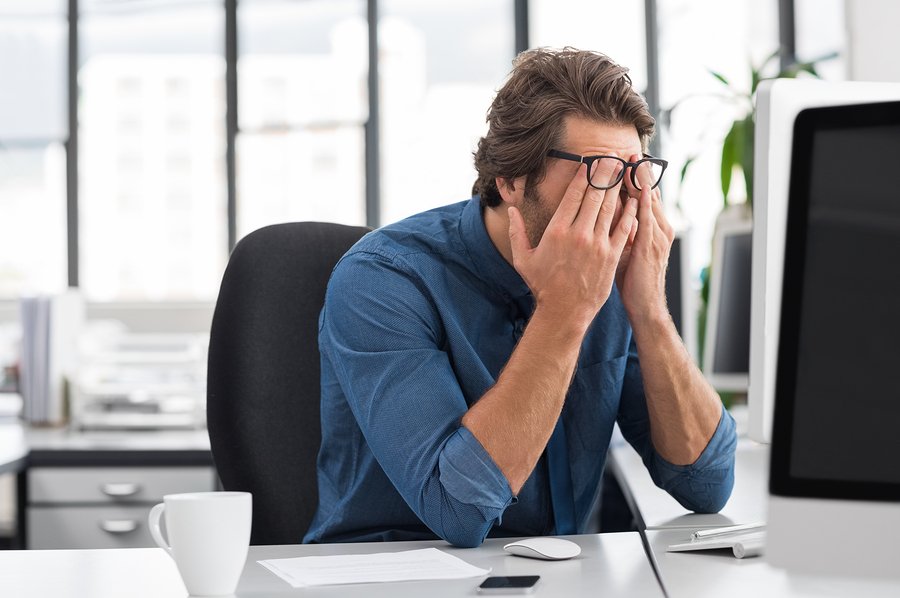The modern lifestyle involves a lot more screen time than previous generations. Work is more efficient with technology, but it also means we spend a large portion of our time staring at screens. Additionally, handheld devices like phones and tablets are vital tools for everyday activities. We use them for mobile games, watching videos, shopping and interacting on social media to help us unwind, relieve stress and accomplish more.
Normally, we blink about 15-20 times a minute but research shows that people blink less than half as often when they’re reading, watching, or playing on a screen. Less blinking and prolonged focusing on a flickering screen leads to dry, irritated eyes, blurry vision and headaches. The collective symptoms of digital eye strain are also called Computer Vision Syndrome.
Surviving a Screen-Centric Office
While you can’t eliminate screens completely from your job or everyday life, you can form new habits to reduce the impact of screen time.
- Follow the 20-20-20 rule: every 20 minutes, look at an object at least 20 feet away for at least 20 seconds.
- Make sure the lighting in the room you’re in is bright enough. Your device should not be brighter than the surroundings.
- Leave your desk for at least one minute every hour. Being glued to the screen also means being glued to the desk. There’s a reason for the saying “sitting is the new smoking”– your cardiovascular health suffers from too much sitting. A brisk walk or short exercise break rescues your eyes from the screen and supports heart health.
- Plan your day to break up the screen time with other tasks. Filing, checking the mail and pacing during conference calls will get your eyes off the screen. Consider your daily agenda in advance so you take these opportunities for physical activity between computer sessions.
- Try over-the-counter lubricating eye drops when your eyes are feeling dry, irritated or uncomfortable.
Put it Down to Prevent Eye Strain
Some employers take advantage of our tech addiction and send non-urgent texts and emails after the workday has ended. While your job may require you to address urgent issues after hours, don’t get glued to your screen for work when it’s not pressing. Just because you are a text away doesn’t mean you’re on call 24/7. Discipline yourself to be part of the solution and hold off on sending non-urgent communication until office hours resume.
When it’s time to unwind, make sure you aren’t stuck in your phone or device. Time Magazine notes the importance of balancing screen-based and screen-free activities. Enjoy online interactions and mobile games in moderation. Make a point to connect without screens when you’re at home with your pets or family. Take the opportunity to go on a walk together and talk about the day.
What about blue light blocking glasses? Digital eye strain and brain stimulation from blue light are two different issues. Blue light blocking glasses won’t ease eye strain but a growing body of research supports the claim that blocking blue light before bed can help you sleep better. Studies suggest participants who wore blue-light-blocking glasses three hours before bedtime reported better sleep quality and mood than those who didn’t.
Turn off your screens at least 30 minutes before bedtime and allow yourself 30 minutes without a device when you awake each morning. You may just notice a difference in your physical and mental health.
While we cannot escape screens, becoming mindful of our eyes’ needs for rest and refocusing can reduce or eliminate symptoms of Computer Vision Syndrome.


